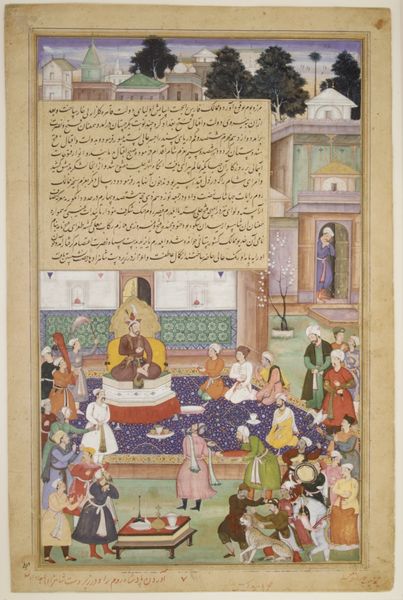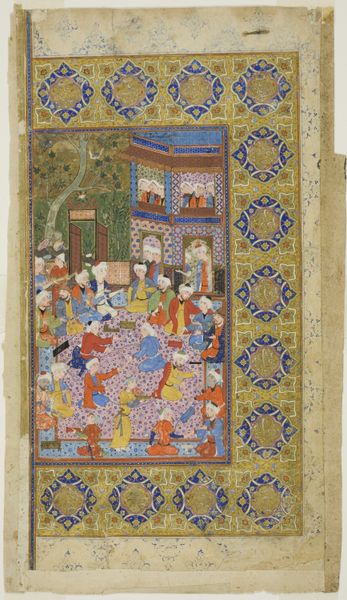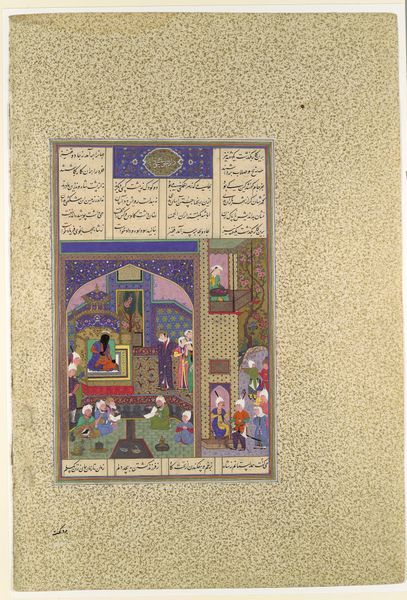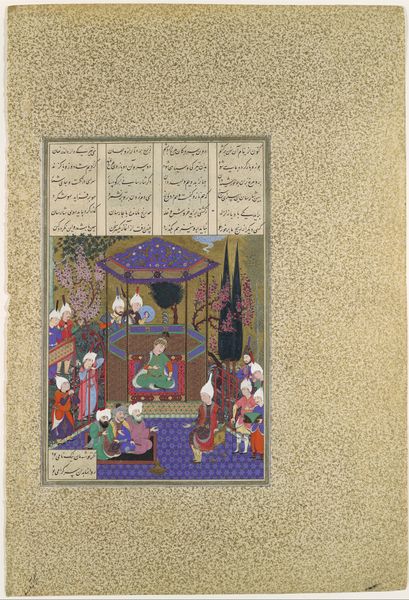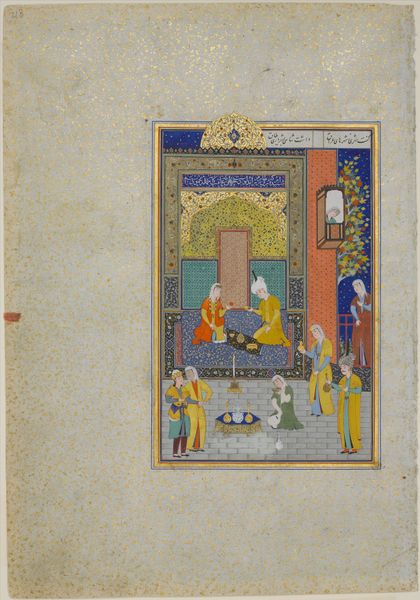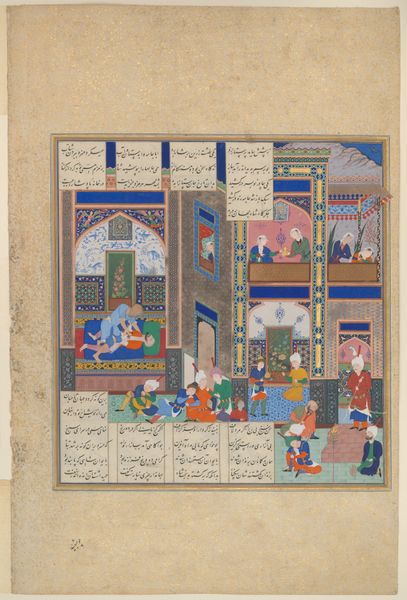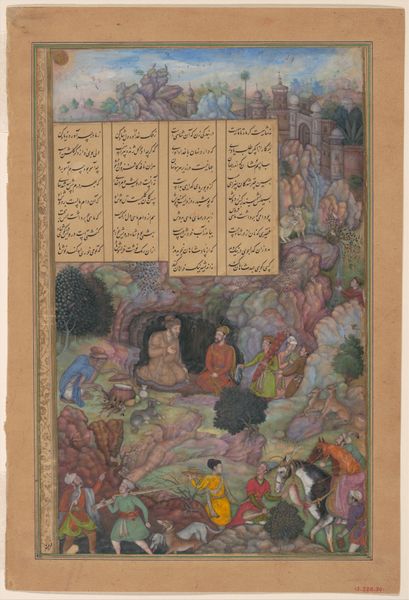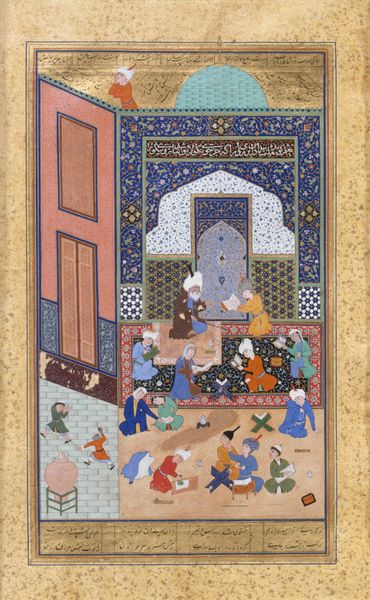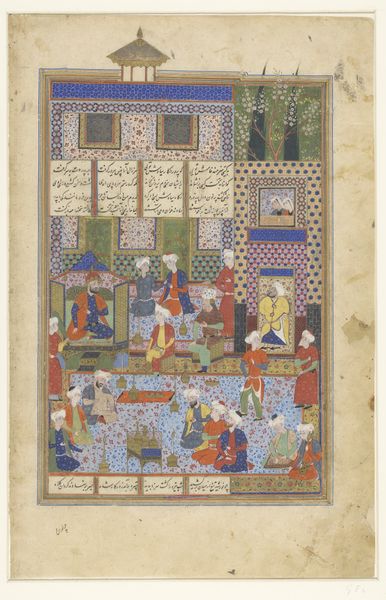
"The Story of the Princess of the Blue Pavillion: The Youth of Rum Is Entertained in a Garden by a Fairy and her Maidens", Folio from a Khamsa (Quintet) of Amir Khusrau Dihlavi 1572 - 1623
0:00
0:00
painting, watercolor
#
garden
#
water colours
#
narrative-art
#
painting
#
asian-art
#
landscape
#
figuration
#
watercolor
#
horse
#
men
#
islamic-art
#
watercolour illustration
#
genre-painting
#
musical-instrument
#
miniature
Dimensions: H. 9 3/4 in. (24.8 cm) W. 6 1/4 in. (15.9 cm)
Copyright: Public Domain
Curator: Let's delve into this vibrant page from a Khamsa, or Quintet, by Amir Khusrau Dihlavi. It’s titled "The Story of the Princess of the Blue Pavilion: The Youth of Rum Is Entertained in a Garden by a Fairy and her Maidens." These works on view at The Met, were created sometime between 1572 and 1623. Editor: My initial impression is of a jewel-box composition! The use of watercolor creates this layered effect of figures situated across multiple registers. There's a real push-pull in terms of perspective, isn't there? Curator: Precisely! That interplay challenges a Western perspectival understanding, allowing multiple narratives to unfold simultaneously. The fairy and her maidens engaging with the youth can be considered within discourses around power, seduction, and the exoticization of the “other” that we see echoed throughout history. This courtly setting masks social structures inherent in that context. Editor: Absolutely. Structurally, the architecture of the pavilion and surrounding garden offers a complex interplay of lines, colors, and textures. Consider how the artist uses the geometry of the tiled surfaces to offset the organic forms of the trees and figures. Curator: And consider the materiality—watercolor on paper lends itself beautifully to capturing both the opulence of courtly life and these subtle, perhaps critical, glances and gestures. One should think of Islamic art of the period. Who has access, what’s the access for? Editor: True, this small detail in the right-hand corner of an embraced couple within an interior is captivating: like a stage within a stage that beckons the viewer closer for inspection, both compositionally and thematically. It underscores a subtle critique about pleasure seeking perhaps, wouldn't you say? Curator: The miniature is really intended to provide the ruling class and other members access. One begins to consider what it must mean that pleasure or leisure become important symbols within court. Who's experiencing leisure or not is crucial. Editor: Thinking of artistic strategy I'm still struck by how the interplay of form and color constructs such a rich visual narrative. The fairy figure alone with its otherworldly grace draws in the eye... Curator: Considering all of the work's many historical, political and thematic lenses, the artwork really leaves us to investigate assumptions within our own modern gaze. What do we presume about Islamic or Asian art? Editor: Yes, absolutely, this work of art underscores what’s still so resonant in our viewing today and invites contemplation and inquiry into narrative, structure, and the visual itself.
Comments
No comments
Be the first to comment and join the conversation on the ultimate creative platform.
